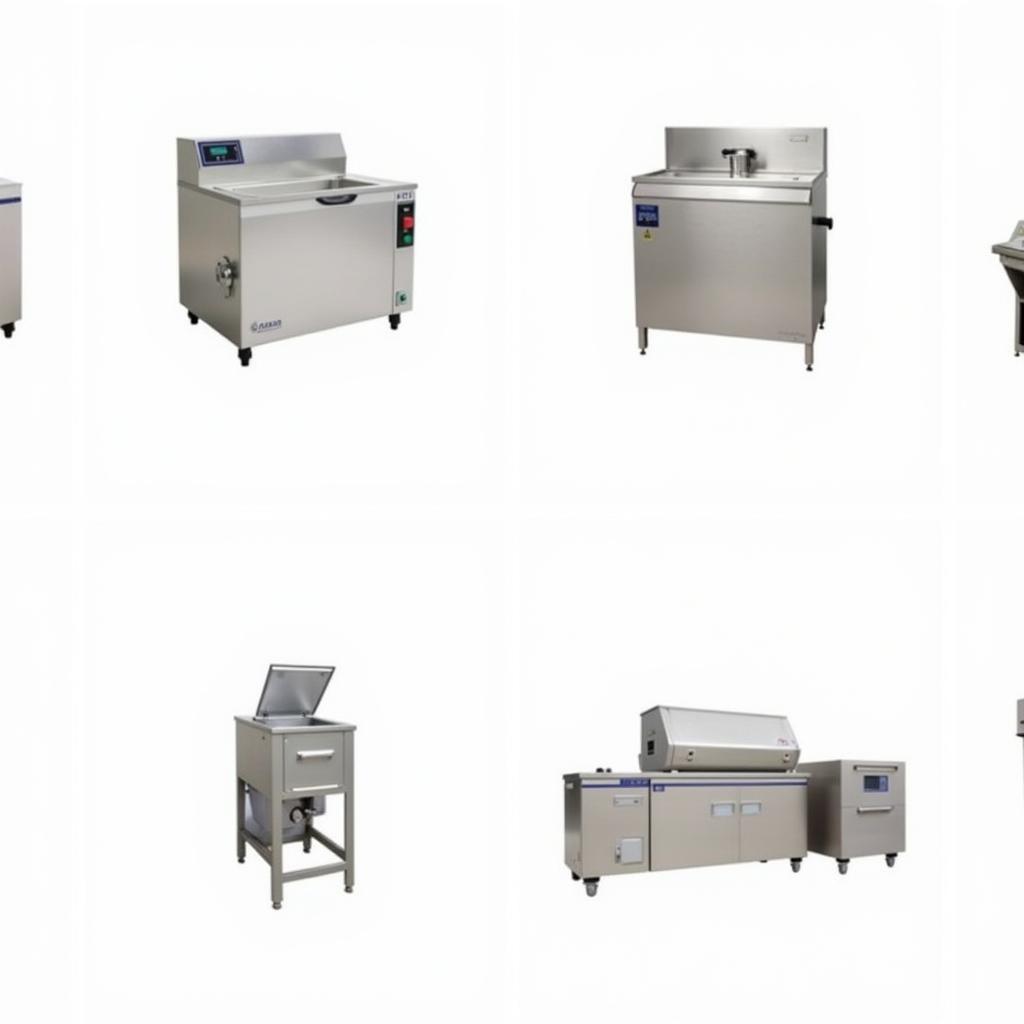Ultrasonic Food Cutting Machines are transforming the food industry, offering precision and efficiency like never before. From delicate pastries to complex layered desserts, these machines utilize high-frequency vibrations to achieve clean cuts, minimizing waste and maximizing product quality. Let’s explore the world of ultrasonic food cutting and discover how it’s changing the game for food manufacturers and culinary artists alike.
Understanding the Mechanics of Ultrasonic Food Cutting
Ultrasonic cutting utilizes high-frequency sound waves, typically above 20kHz, to create vibrations that cut through food materials. A transducer generates these vibrations, which are then amplified and focused by a sonotrode (cutting horn). As the sonotrode vibrates at high speed, it creates localized friction that weakens and separates the material with remarkable precision. This process generates minimal heat, preserving the texture, appearance, and nutritional value of the food.
Advantages of Using Ultrasonic Food Cutting
- Clean and Precise Cuts: Unlike traditional cutting methods, ultrasonic cutting minimizes product deformation and crumbling, leading to cleaner, more visually appealing cuts, especially in delicate food items.
- Reduced Waste: The precise nature of ultrasonic cutting minimizes material loss, resulting in significant cost savings over time.
- Improved Product Quality: By minimizing heat generation, ultrasonic cutting preserves the integrity of the food, including its texture, flavor, and nutritional value.
- Versatility: Ultrasonic cutting machines can handle a wide range of food products, from soft cheeses and delicate pastries to harder items like vegetables and even frozen foods.
- Hygiene and Sanitation: The non-contact nature of ultrasonic cutting reduces the risk of cross-contamination and simplifies cleaning procedures.
 Ultrasonic food cutter slicing through a layered cake
Ultrasonic food cutter slicing through a layered cake
Applications of Ultrasonic Food Cutting Machines
Ultrasonic cutting machines are finding diverse applications across the food industry, proving particularly valuable in the following areas:
- Bakery and Confectionery: Creating intricate designs in cakes, pastries, and candies is made significantly easier with ultrasonic cutting. The precise cuts minimize crumbling and allow for complex layering and shaping.
- Dairy and Cheese Processing: Ultrasonic cutting allows for portioning and slicing of cheeses without deformation, preserving their texture and minimizing waste.
- Fruit and Vegetable Processing: From slicing and dicing to more complex shapes, ultrasonic cutting maintains the freshness and integrity of fruits and vegetables.
- Meat and Poultry Processing: While still a developing area, ultrasonic cutting shows promise in portioning and slicing meats with minimal damage and improved yield.
- Frozen Food Processing: Ultrasonic cutting excels at portioning and slicing frozen foods without thawing, maintaining their shape and preventing damage.
What are the Benefits Compared to Traditional Cutting Methods?
Traditional cutting methods often rely on blades, which can cause compression, tearing, and unwanted deformation, particularly in delicate food items. Ultrasonic cutting eliminates these issues, providing a cleaner, more precise cut, leading to higher product quality and reduced waste.
“Ultrasonic cutting offers a level of precision and control that’s simply unattainable with traditional methods,” says renowned food scientist Dr. Emily Carter, Ph.D. “It’s a game-changer for anyone seeking to optimize their food processing operations.”
Selecting the Right Ultrasonic Food Cutting Machine
Choosing the right ultrasonic food cutting machine depends on several factors, including the type of food being processed, production volume, and budget. Key considerations include:
- Frequency: Higher frequencies generally result in finer cuts, while lower frequencies are better suited for thicker or harder materials.
- Power: Higher power allows for faster cutting and handling of denser foods.
- Sonotrode Design: The shape and size of the sonotrode should be tailored to the specific cutting application.
- Automation and Control: Automated systems can significantly improve efficiency and consistency in high-volume production environments.
 Various models of ultrasonic food cutting machines
Various models of ultrasonic food cutting machines
Conclusion
Ultrasonic food cutting machines are revolutionizing the food processing landscape, offering unprecedented precision, efficiency, and versatility. From enhancing product quality to minimizing waste, these machines provide a clear advantage over traditional cutting methods. As technology continues to evolve, ultrasonic cutting is poised to play an even more prominent role in shaping the future of food processing. If you’re looking to optimize your food processing operations, exploring the potential of ultrasonic cutting is a must.
FAQs
- What is the lifespan of an ultrasonic cutting blade (sonotrode)?
- How often does the sonotrode need to be replaced?
- What types of food can be cut with an ultrasonic machine?
- Is ultrasonic cutting suitable for high-volume production?
- What are the maintenance requirements for an ultrasonic food cutting machine?
- How does ultrasonic cutting compare to waterjet cutting for food processing?
- What is the approximate cost of an ultrasonic food cutting machine?
Need more information? Check out our other articles on food processing equipment and techniques. Considering incorporating ultrasonic cutting into your operation? Contact us! Phone: 02437655121, Email: minacones@gmail.com or visit us at 3PGH+8R9, ĐT70A, thôn Trung, Bắc Từ Liêm, Hà Nội, Việt Nam. We have a 24/7 customer service team ready to assist you.